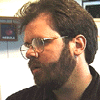Good reading on the pitfalls faced while startups and open source grow at dizzying rates. And a major new version of Red Hat Linux emerges.
Twitter’s learning experiences about fast growth, new found success and founders working (or rather not working) together. A fascinating account of how co-founders often aren’t good managers, team builders or executives in their own ventures. In most startups, hiring is always a pain point. Underhiring both in experience and quantity can be debilitating.
Yet for all its astonishing growth, Twitter has succeeded in spite of itself — the enviable product of a great idea and lightning-in-a-bottle viral success rather than a disciplined approach to how it’s managed….
What the company needed was simple: people to do all the work. Yet it moved painfully slowly in hiring, with just 110 employees by the end of 2009, even though it had raised $150 million in venture capital by then….
“The mistake I made was definitely underhiring, both in quantity and in experience, in several areas, for a long time,” Mr. Williams says now. He attributes that mistake to the daily distractions of running Twitter and not anticipating how big it would become….
Twitter finally hired a recruiter, as well as people to handle mundane but important big-company tasks like human resources, payroll and ensuring that all of Twitter’s partners use the same blue bird logo….
Twitter’s executives talk about the “Dunbar number” — the maximum number of people, generally believed to be 150, with whom one person can have strong relationships….Each time employees log on to their computers, for instance, they see a photo of a colleague, with clues and a list of the person’s hobbies, and must identify the person. And notes from every meeting are posted for all employees to read.
Read more at NYT.
What Dries Buytaert is thinking about the commercialization of Drupal. Dries talks about the concern that open source projects when commercialized may spur concerns that the spirit of volunteerism could be lost or a volunteer project can be tainted when paid staff is introduced.
When new ground needs to be broken, it’s often volunteer communities that do it. But a full-time, paid infrastructure can be necessary for the preservation and protection of what communities begin. And when new advances are to be made or gaps to be filled in, volunteers rise up within the paid infrastructure. There will always be a place for volunteers, just as there is a place for professionals….
It’s quite common in the software industry that great movements are started by volunteers. While this can work quite well initially, there comes a time when a volunteer-based project becomes a threat to larger, controlled organizations (e.g., MySQL to Oracle, Linux to Microsoft). At that point, if the Open Source organization is to survive and compete, it may have to fortify its position by fostering commercial involvement that helps the project advance and compete. Red Hat is a good example. Without Red Hat, Linux might not have the strong market share it has today. It is also one of the reasons I co-founded Acquia, and why it is important that all Drupal companies contribute back to the project….
The commercialization of a volunteer-driven Open Source project is part of a project’s natural life-cycle. While it can be a significant change, it is a great opportunity. We can reap the benefits of growth, prevent volunteer burn-out and distribute the effort.
Read more on Dries’s blog.
Red Hat finally releases Red Hat Enterprise Linux (RHEL) version 6 after more than 3 years. The new version of RHEL boasts of a modern Linux kernel (2.6.32), improved performance, optimized resource management through kernel improvements, RAS, scalability, virtualization, power saving features and ext4 support.
Filesystems: The new default file system, ext4, is faster, more robust, and scales to 16TB. The fourth extended filesystem (ext4) is based on the third extended filesystem (ext3) and features a number of improvements. These include support for larger file systems and larger files, faster and more efficient allocation of disk space, no limit on the number of subdirectories within a directory, faster file system checking, and more robust journaling. The ext4 file system is selected by default and is highly recommended.
Power Management: The tickless kernel feature keeps systems in the idle state longer, resulting in net power savings. Active State Power Management and Aggressive Link Power Management provide enhanced system control, reducing the power consumption of I/O subsystems. Administrators can actively throttle power levels to reduce consumption. Realtime drive access optimization reduces filesystem metadata write overhead.
Stable Application Development and Production Platform: Ruby 1.8.7 is included, and Rails 3 supports dependencies. Updates to the popular web scripting and programming languages PHP (5.3.2), Perl (5.10.1) are also included.





